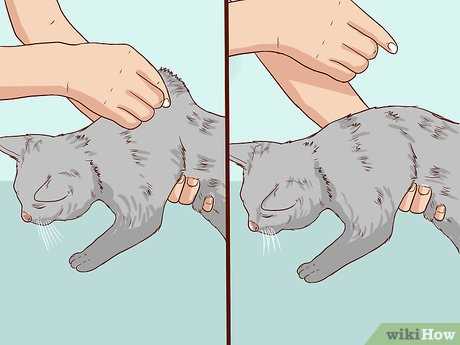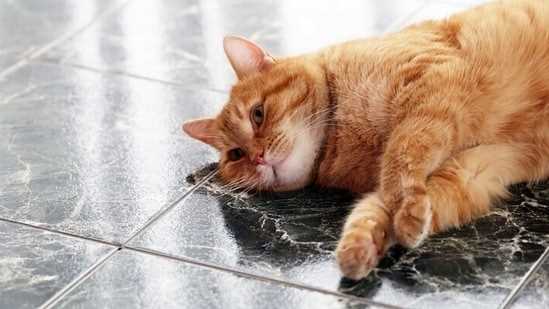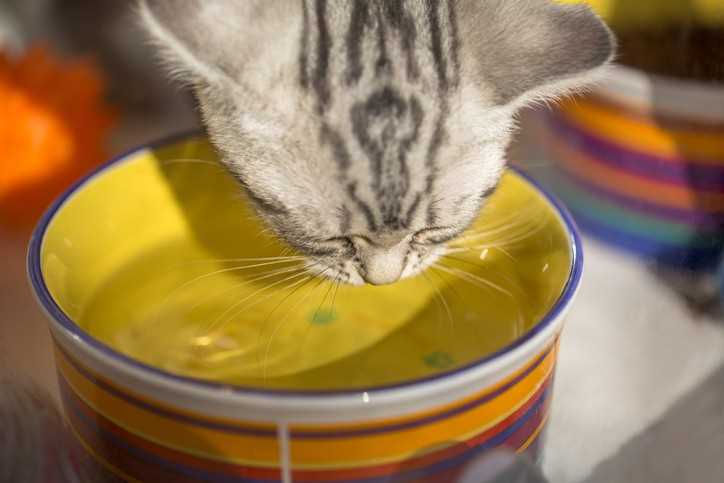



For anyone caring for a furry companion with moisture issues, offering wet food can significantly boost their water intake. Opt for high-quality canned varieties, which typically contain around 70-80% moisture, creating a delicious and hydrating meal.
In addition to food, fresh water is paramount. Ensure a constant supply of clean, filtered water in a bowl that’s regularly changed. Cats often prefer running water, so consider investing in a pet water fountain that encourages them to drink more.
Another option is to incorporate broth into their diet. Choose low-sodium chicken or beef broths without onions or garlic. This tasty addition not only entices your furry pal but also aids in hydration.
If your pet is still reluctant, try adding a small amount of water to their dry kibble. This can create a more appealing texture that encourages sipping. Always monitor their intake to ensure they are maintaining adequate hydration levels.
Recommendations for a Thirsty Feline
Opt for wet food options. Canned varieties not only provide nourishment but also additional moisture. Look for high-quality options with a high water content, ideally above 75%.
Consider introducing a broth made from chicken or beef without any added salt or seasoning. This can entice your furry friend to drink more fluids. Ensure it’s cooled down before offering it to avoid any burns.
Hydration Alternatives
Incorporate water-rich fruits and vegetables, like watermelon or cucumber, in small amounts. Always check for safe options, as some foods can be harmful to us felines.
Utilize a pet water fountain. The flowing water often attracts us more than still options. Freshness matters, so keep it clean and filled regularly.
Monitoring Intake
Track how much your companion is drinking daily. If there’s a noticeable decrease, consult with a veterinarian. They can provide tailored advice and treatment if necessary.
Staying hydrated is critical for overall health, especially in a playful Scottish Fold like me. Take these steps to keep your furry friend feeling their best!
Identifying Signs of Dehydration in Cats
Check the gums first. If they appear dry or sticky instead of moist and pink, it’s a warning sign. Gently press on the gums; they should return to their normal color within a second or two. If not, it’s a concern.
Behavioral Changes
Observe activity levels. I notice when I’m less energetic or more lethargic than usual; that can indicate a problem. Also, watch for changes in appetite. If I’m not interested in my favorite treats, it could mean I need more fluids.
Physical Signs

My skin is another indicator. If my fur loses its elasticity, like when you pinch the skin at the back of the neck and it doesn’t spring back quickly, that’s a red flag. Additionally, pay attention to the frequency of urination. Fewer trips to the litter box can signal a need for more hydration.
Keep an eye on my eyes too! If they appear sunken or dull, it’s a signal that something isn’t right. Monitoring these signs can help catch any issues early.
Choosing the Right Hydration Solutions
Wet food offers a tasty way to enhance fluid intake. Look for high-quality brands that list meat as the primary ingredient. Some options even include added electrolytes to further aid in replenishment.
Electrolyte Solutions
Specialized electrolyte solutions formulated for pets can be beneficial. These products often contain a balanced mix of sodium, potassium, and glucose, promoting absorption. Administer in small amounts using a syringe or mix with food to encourage consumption.
Homemade Broth
Crafting a simple broth from boiled meat or poultry can be enticing. Ensure no onions or garlic are included, as these can be harmful. This nutritious liquid can be offered in a bowl or mixed into dry kibble to increase moisture content.
Incorporating Wet Food into Your Cat’s Diet
Adding moist meals to my daily menu has made a noticeable difference in my hydration levels. These meals contain about 70-80% water, which helps keep me refreshed and my skin healthy. It’s simple: a few servings of wet food each day can significantly increase water intake without requiring extra effort.
Choosing Quality Options
Opt for high-quality canned options that list real meat as the first ingredient. Avoid those with excessive fillers or artificial additives. Check for balanced nutrition to ensure I get all the necessary vitamins and minerals. Look for products specifically formulated for my age and health needs.
Introducing Gradually
Transitioning to include moist food can be done slowly. Start by mixing a little with my current dry food to get me accustomed to the new texture and flavor. Monitor my reaction and adjust the ratio based on my preference. If I seem hesitant, try warming it slightly to enhance the aroma; sometimes, a little heat makes all the difference!
Using Flavor Enhancers to Encourage Drinking

If you’re struggling to entice your furry friend to stay hydrated, flavor enhancers can be a great solution. These additives make water more appealing, encouraging consumption. A few drops of low-sodium chicken or beef broth can transform plain water into a savory treat. Just ensure the broth is free from onions and garlic, which can be harmful.
Try Commercial Flavor Enhancers
There are several commercial products available specifically designed to enhance water flavor. Look for those made from natural ingredients, as they often contain no artificial additives. Products like “Savory Water” or “Flavor Drops” can make a significant difference in your pet’s water bowl. Just a small amount can entice your furry companion to drink more.
Incorporate Broth into Meals

Add a splash of broth to your pet’s wet food to increase moisture intake effectively. This can complement options like wet food for ragdoll cats, making each meal more enjoyable and hydrating. Additionally, offering ice cubes made from broth can serve as a fun treat that encourages sipping while playing.
Monitoring Water Intake and Adjusting Diet
Tracking the amount of liquid consumed is crucial for maintaining health. A simple method is to measure water in the bowl before and after each meal. This allows me to see how much is drunk daily. If I notice a decline in intake, it’s time to reassess dietary options.
Here are some strategies to monitor hydration:
- Keep a daily log of water levels to identify patterns.
- Use a clear bowl to easily see the water levels.
- Consider a water fountain; many enjoy drinking from flowing water.
Adjustments to meals can also support better hydration. Incorporating wet food can significantly increase liquid intake. When evaluating dry options, opt for brands that have higher moisture content, if any. It’s beneficial to mix both types of food for a balanced diet.
Experiment with flavors and textures; some may prefer pate, while others might like chunks in gravy. Pay attention to preferences, as this can influence how much is consumed.
Regular vet check-ups are vital. They can provide insights into hydration needs based on health status. If any concerns arise regarding liquid consumption or overall well-being, consult immediately.
Consulting with a Veterinarian for Severe Cases
In situations where my hydration levels reach alarming lows, immediate veterinary assistance is crucial. A professional can assess the severity of fluid loss and recommend appropriate interventions, such as intravenous fluids or specialized treatments.
Signs Indicating Urgent Care
Observe for these symptoms that warrant a vet visit:
- Persistent lethargy
- Sunken eyes
- Dry gums and mouth
- Loss of skin elasticity
- Vomiting or diarrhea
Veterinary Recommendations
During the consultation, the vet may suggest:
| Assessment Method | Purpose |
|---|---|
| Physical Examination | To evaluate overall health status |
| Blood Tests | To check for underlying health issues |
| Fluid Therapy | To restore hydration levels effectively |
Follow-up appointments may be necessary to ensure recovery progresses. Always keep an open line of communication with the veterinarian for ongoing support and advice tailored to individual needs.
FAQ:
What are some signs that my cat is dehydrated?
Common signs of dehydration in cats include dry gums, lethargy, sunken eyes, and a decrease in skin elasticity. If you gently pinch the skin on the back of your cat’s neck, it should retract quickly. If it stays tented for a few seconds, your cat may be dehydrated. Additionally, if your cat is drinking less water than usual or has decreased urine output, these can also be indicators of dehydration.
What types of food can help hydrate a dehydrated cat?
Wet cat food is a great option for helping to hydrate a dehydrated cat, as it contains a significant amount of moisture. You can also consider offering broth or homemade soups without onions or garlic, which can entice your cat to drink more fluids. Additionally, some cats may enjoy ice cubes or frozen treats made from low-sodium chicken or beef broth as a fun way to increase fluid intake.
How can I encourage my cat to drink more water?
To encourage your cat to drink more water, you can try multiple strategies. Provide fresh, clean water daily in a bowl that is large enough for them to drink comfortably. Some cats prefer running water, so a pet water fountain can be appealing. Placing the water bowl in different locations or near their food can also make it more accessible. Additionally, you can add water or broth to their dry food to increase their fluid intake.
When should I take my dehydrated cat to the vet?
If you notice signs of severe dehydration, such as persistent lethargy, vomiting, diarrhea, or if your cat is not drinking or eating at all, it is important to take them to the vet immediately. Dehydration can lead to serious health issues, and a veterinarian can provide the necessary treatment, which may include intravenous fluids and other supportive care. It’s always better to err on the side of caution when it comes to your pet’s health.










